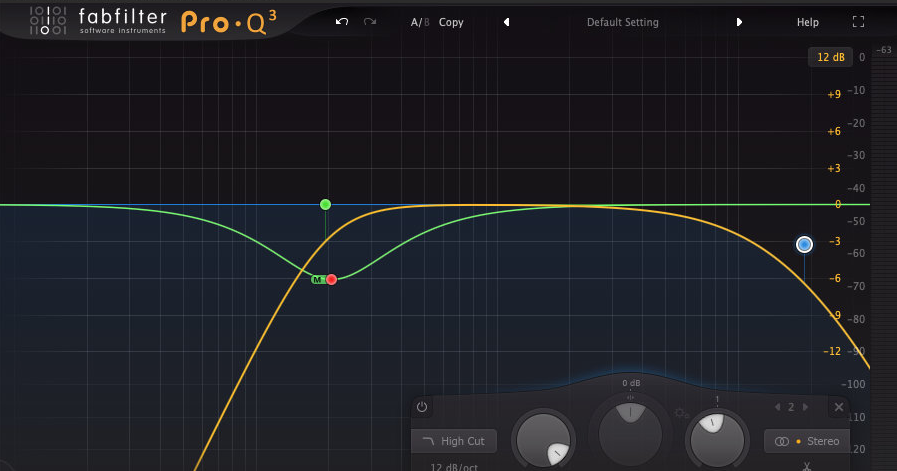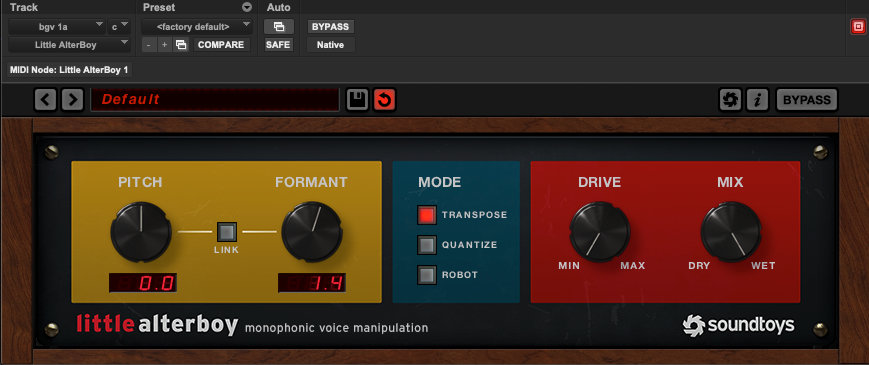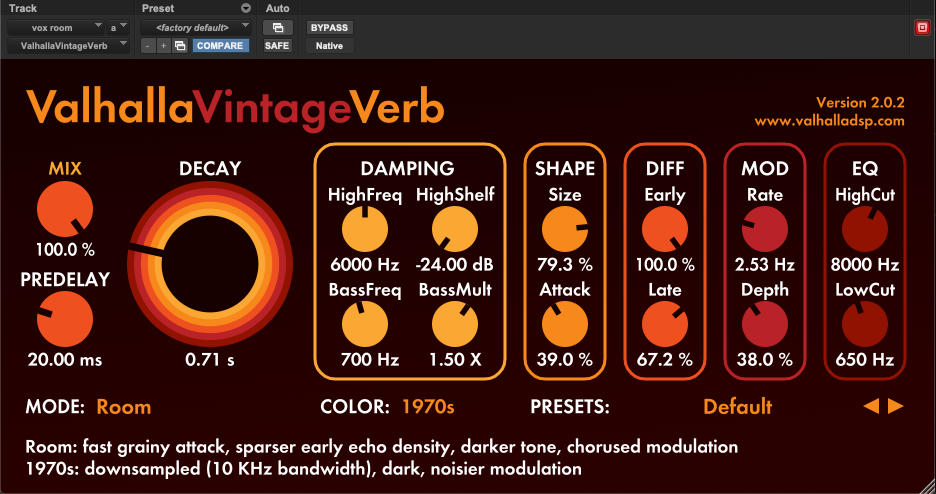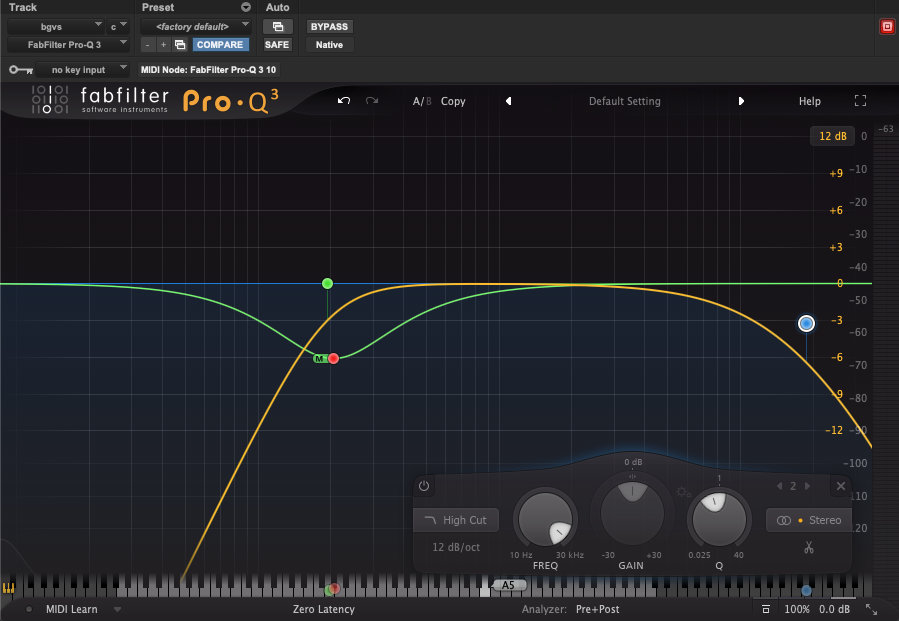
Article Content material
Nice vocal preparations can really elevate a music, including an immediacy and dynamics that pull the listener in. Mixing layers of vocals, nevertheless, can require a completely completely different method from working with a lone lead vocal. On this article, I’m going to supply just a few ideas for how one can deal with background vocals in a mixture.
1. Determine the Sound You Need
In the event you’ve learn just a few of my articles, you’ve seen me make some extent like this earlier than: it’s a lot, a lot simpler to get a sound you want for those who truly know what that sound is prematurely.
There’s multiple solution to have nice sounding vocal preparations in a recording. The style, the music and the singers are all going to level to completely different approaches. So take a second to consider the place your backup vocals are at earlier than you begin throwing plugins on tracks. You may ask your self some questions like:
- Is that this a music with a transparent lead vocal observe, or extra of an ensemble state of affairs?
- Do the backup vocals assist the principle vocal half, or do they work independently?
- How do the background vocals match into the construction of the music? Are they there on a regular basis, or do they arrive in for sure sections?
The solutions to those questions can fluctuate broadly from one music to a different, which is precisely why it’s price interested by them earlier than you begin mixing. As at all times, it may be extraordinarily useful to have a reference in thoughts — a recording that you already know has a vocal sound you want. You should utilize that all through your combine course of to gauge whether or not your selections are main you in the suitable route.
2. Have a Pan Plan
When you’ve bought a imaginative and prescient for the way your background vocals are going to sound, some of the fundamental however efficient instruments that can assist you get that sound is panning.
A quite common method to background vocal mixing is to have them add a way of width to choruses and the “larger” moments in a music. Britney Spears’ “Child One Extra Time” is a basic instance of the sort of backup vocal combine:
In that blend, the verses function extra minimal vocal preparations that really feel centered within the stereo discipline. Backup vocal layers enter within the pre-chorus and construct into the refrain, including width to the vocal half and intensifying the dynamics of the music.
After all, that’s only one instance for one kind of music. D’Angelo’s “Until It’s Finished” options extra minimal vocal layering that stays near the middle, creating a way of separation within the combine. Skip to 2:58 to listen to the clearest instance of this.
A music with extra motion within the vocal association may profit from panning that highlights distinct layers by giving them completely different placements within the stereo discipline, like you may hear within the Seashore Boys’ “All I Wanna Do:”
The purpose I’m attempting to make with these examples is that approaches to vocal panning are extremely diversified. There isn’t one magic bullet method that may work for any music, however referencing vocal mixes you want may also help inform the alternatives you make.
3. Favor the Strongest Takes
One other quite simple step you may take to strengthen background vocals is to choose a favourite take and make it extra outstanding within the combine when elements are doubled.
There’s no regulation that claims you need to combine all doubles at equal quantity. If a given vocal line is double or triple tracked (or extra), discover the strongest efficiency and blend it in louder than the tracks doubling it. You’ll in all probability discover that the vocal half as an entire sounds tighter in consequence. This method turns into increasingly vital as you add further backup vocal tracks, protecting issues clear and in tune.
4. Use Formant Shifting for Colour and Depth
Certainly one of my favourite methods for thickening up a layered backup vocal half includes formant shifting a few of the voices to sound “larger” or “smaller.” This method works particularly properly when the vocal association is all coming from one singer layering overdubs.
In the event you aren’t acquainted, formant shifting is a sonic artifact that naturally happens because of pitch shifting — initially achieved by rushing up or slowing down tape playback. Because the pitch of a sound is shifted up, the supply seems to develop into smaller, or larger when the pitch is shifted down. With digital processing, we are able to separate that sense of measurement from the precise pitch of a sound, and that’s what formant shifting is all about.
You probably have a bunch of layered backup vocals, strive formant shifting a few of them up or down. One semitone or much less is usually sufficient for delicate thickening, although round two semitones can yield cool outcomes if realism isn’t a necessity. Mess around with settings, and also you’ll know fairly rapidly how far is just too far. I'll sometimes shift upwards for prime harmonies and downwards for low ones, however that isn’t a tough and quick rule. The objective right here is to distinguish voices from each other so the group sounds bigger. If issues get “glitchier” than you’d like, again off. A lightweight contact can go a great distance with this trick.

A type of excessive upward formant shift of 1.4 semitones
My favourite plugin for pitch and formant shifting is Little AlterBoy by Soundtoys — however there are many different nice choices for this form of processing. Waves Vocal Bender and Polyverse Manipulator stand out as extra “effect-y” selections, whereas Celemony Melodyne and Antares Throat Evo are extra versatile and pure sounding.
5. Use Quick Delay for a Larger Sound
One other extra standard trick for thickening up the sound of a vocal group is to make use of quick delay — I’m speaking very quick. The objective is to create the sound of a vocal group the place just a few singers are persistently just a few milliseconds late.
Delay values someplace within the neighborhood of 20-60 ms are likely to work properly — simply lengthy sufficient to not create part issues however quick sufficient that the delay doesn’t sound rhythmic. I’ll use a light-weight contact with this form of processing, as mixing in an excessive amount of makes the delay noticeable for what it's.
This trick works actually properly in tandem with the earlier suggestion — formant shift some voices and add some quick delay, and also you may discover that your backup vocal “group” sounds a lot larger.
6. Glue Voices Collectively With Room Reverb
When working with layered vocal overdubs, it’s fairly frequent to combine them to sound like a bunch of backup singers did a take collectively round one or two mics. In these circumstances, room reverb is your pal. I’ll sometimes use a room reverb with a really quick decay — round or lower than one second — and blended right down to the purpose of barely being noticeable. It isn’t frequent for my backup vocal room reverb buss to finish up any greater than 12 dB under the dry tracks.

ADVERTISEMENT
The objective of this form of reverb is realism. A dozen close-mic’ed vocal overdubs completed by the identical individual has a definite sound. Placing that multitrack in a “area” may also help it sound extra pure, including a way of depth and openness.
This trick stacks properly with the final two. It additionally works in tandem with a extra dramatic reverb — plate or chamber reverbs are nice selections. The room reverb will create a way of realism, whereas the chamber or plate provides a basic, lush reverb tone. The room reverb will nonetheless work to connect the vocal layers collectively with out being overtly noticeable within the combine.
7. Go Heavy With the De-esser
Issues can begin sounding actually cluttered when a dense vocal association incorporates a bunch of sibilant consonants that each one arrive at barely completely different occasions. Even skilled vocalists can have bother nailing the timing of “s” sounds that land on the finish of phrases, and less-than-tight performances can are likely to make issues sound fairly messy.
For that purpose, I’ll sometimes be fairly heavy handed with a de-esser on a backup vocal observe. So long as there are one or two extra subtly processed tracks driving the articulation within the vocal, the outcomes can nonetheless sound pure with out getting messy.
It can be useful to make use of plugins that may tame aggressive transients. Eventide Cut up EQ permits you to EQ transients individually from sustained sounds, and Oeksound Spiff is an “adaptive transient processor” that permits for a ton of management over transient data. Each are wonderful choices when extra percussive consonants are an issue.
8. Buss Processing is Essential
It’s commonplace to listen to a good quantity of independence from essentially the most outstanding vocal in a backup half. Nonetheless, generally, these supporting vocal layers usually tend to perform as one unit within the combine reasonably than a bunch of distinct parts.
Most often, backup vocals are finest handled collectively, with essentially the most fundamental and essential processing taking place on a buss. No matter different sign circulate twists and turns are essential, ship your backup vocals to 1 submix. That is the place they’ll get the majority of essentially the most fundamental processing that helps them sit of their correct place within the combine.
9. Use EQ to Give the Lead Vocal House
On my backup vocal submix, you’ll normally discover some mild EQ supposed to assist these further vocal layers assist the lead with out getting in the way in which. I’ll look to make cuts within the midrange wherever the lead vocal wants respiratory room. Often, that’s between 150-400 Hz the place the physique of the lead will sit, and a couple of kHz or so to assist the lead vocal have a definite sense of articulation.
If the backup vocals dwell on the edges of the combination, I’ll make these midrange cuts down the middle channel utilizing a mid/aspect EQ. The lead vocal can stand out within the middle with out compromising the fullness of the backup an excessive amount of.
Moreover, excessive and low-pass filtering might be essential to get backup vocals sitting proper in a mixture. Excessive-pass filters, as at all times, are nice for cleansing up low frequencies that add nothing to a backup vocal and solely add mud to a mixture. Low-pass filters may also help tuck background vocals behind the lead — letting it sparkle within the highlight whereas they sit in… you already know, the background.

Background vocal buss EQ – excessive and low go filtering, plus a beneficiant decrease midrange scoop down the middle
10. Use Mild, Medium-Quick Compression to Hold Them in Verify
Sticking with the subject of buss processing, some mild compression on a backup vocal submix is usually essential to maintain these vocals full sounding with out getting overbearing.
Virtually all my mixes with vocals will function a compressor on the backup vocal group buss, set at a light-weight ratio to cut back round 2-4 dB on the most.

Background vocal buss compression — mild ratio, medium quick assault, and launch timed to the music
My go to for this objective is UAD’s Neve 33609 plugin. It has assault occasions solely between 3-6 ms. Medium-fast assault occasions in that vary could make a compressor clamp down on a backup vocal quick sufficient to get it out of the way in which of the lead vocal, drums or anything that wants transient articulation in a mixture — however not so quick that they disappear. I’ll time the discharge to go well with the tempo of the music, aiming for a candy spot between pumpy/unnatural (too quick) and robbing the vocals of presence (too gradual).
Conclusion
Background vocal preparations could make mixing really feel extra sophisticated, however there’s no purpose that must be the case. Like working with multitracked drums or any of the opposite frequent obstacles in mixing, having a imaginative and prescient for the sound you need and making essentially the most out of the fabric you've will go a great distance. Hopefully, after studying this text, you've just a few new concepts about how one can method the vocal preparations in your subsequent combine.




